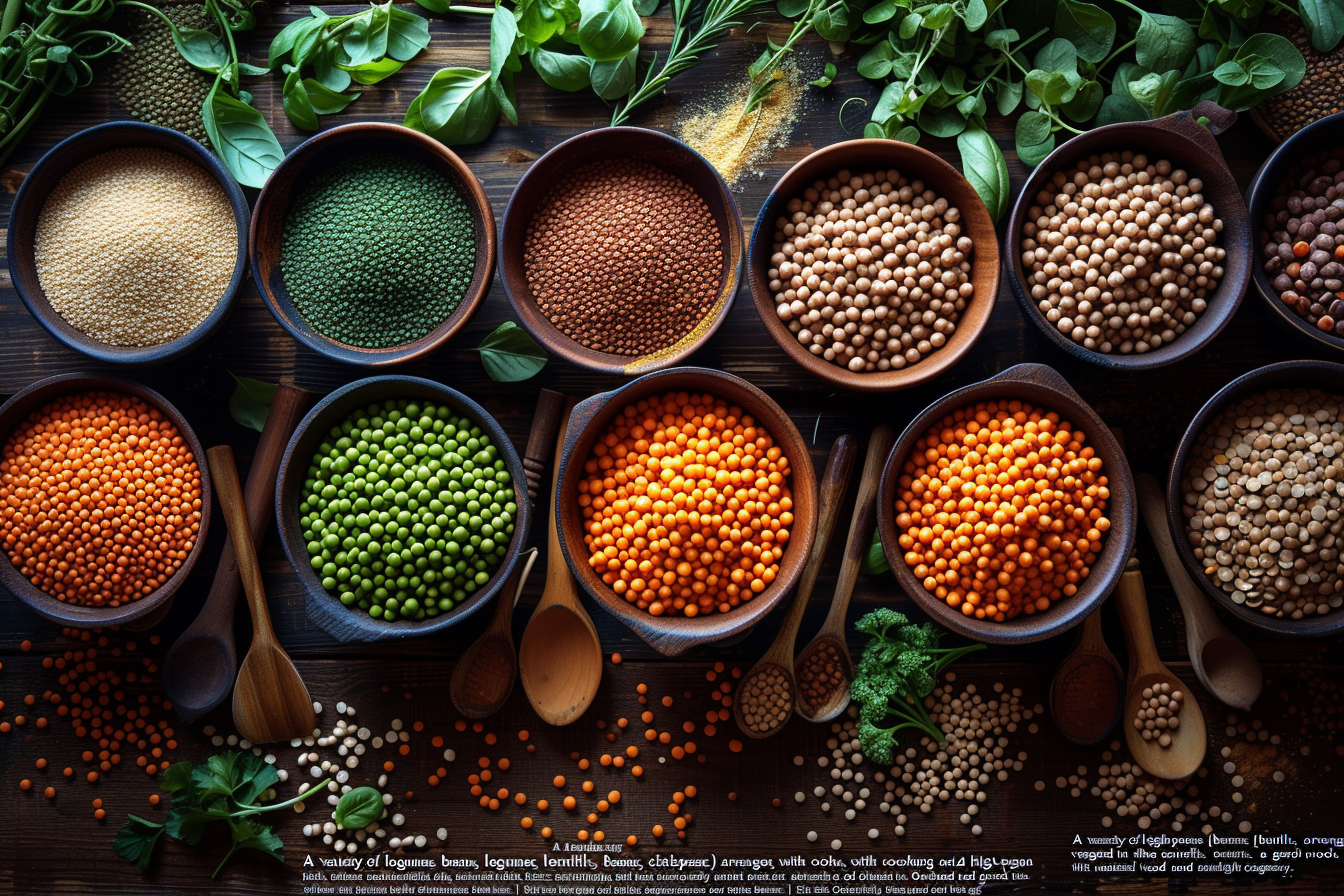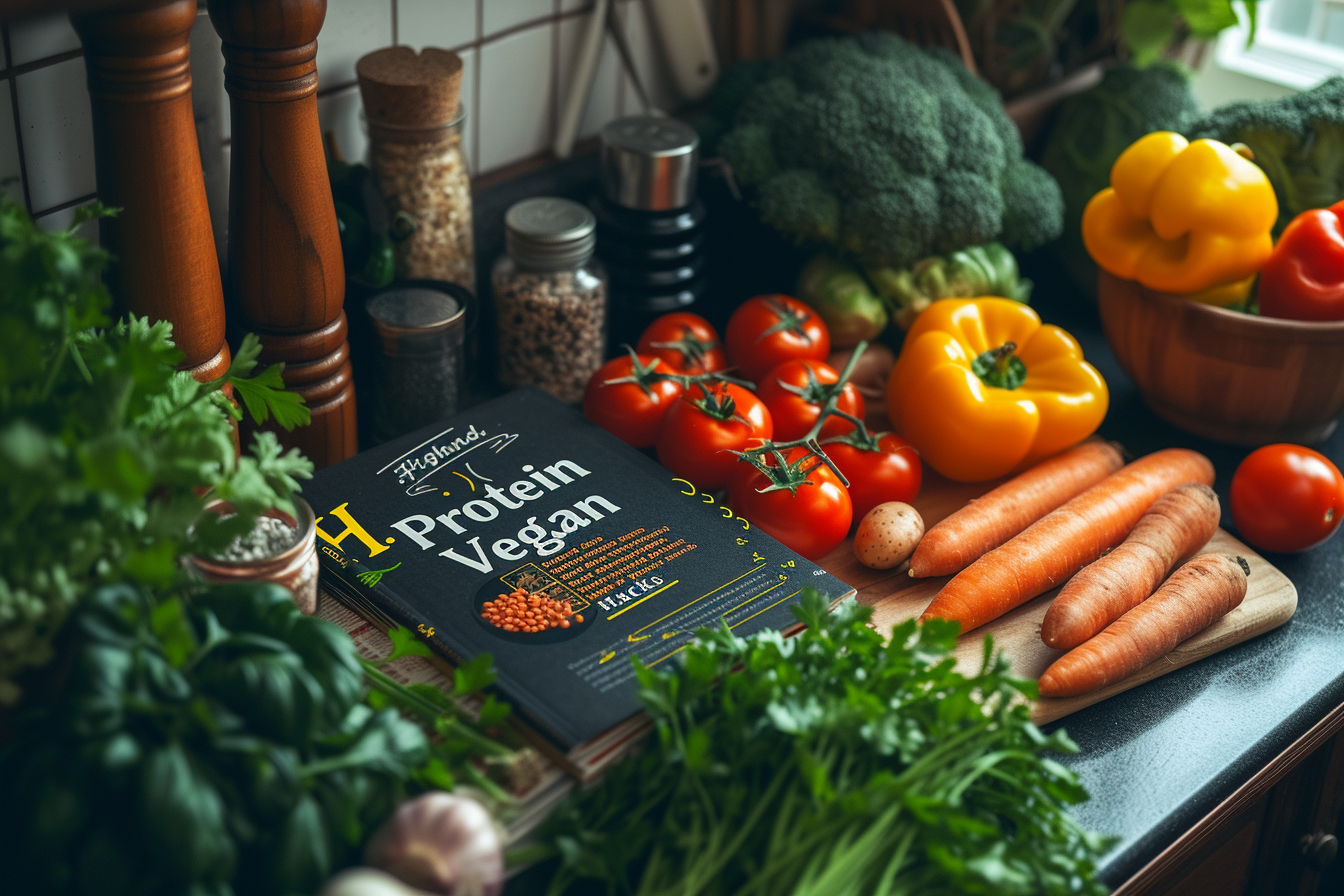Protein is often considered the cornerstone of any diet, and for vegans, the journey to achieving a sufficient protein intake can be quite a creative adventure. Traditional sources of protein such as meat, dairy, and eggs are off the table for those following a vegan lifestyle. The challenge lies in finding plant-based alternatives that deliver not just the necessary protein, but also a wide range of nutrients to support overall health.
Harnessing the power of legumes

Legumes stand out in the vegan pantry, with their exceptional protein content and versatility. Chickpeas, lentils, and black beans can be the backbone of many nutrient-dense meals. A culinary hack to increase the protein content even further is to blend these legumes into purees and incorporate them into recipes like soups, patties, or even baked goods. Not only do they thicken dishes naturally, but they also give a protein-rich boost.
Cooking tips for legumes:
- Soak dried legumes overnight to reduce cooking time and enhance digestibility.
- Experiment with a variety of spices to elevate the flavors, as legumes tend to absorb and complement various seasonings beautifully.
- For a nutritious twist on traditional dishes, try lentil Bolognese or chickpea "tuna" salad.
Exploring plant-based protein powders
In the vegan kitchen, plant-based protein powders are a game changer, offering concentrated sources of protein that can be easily added to smoothies, oatmeal, or pancakes. Pea protein, brown rice protein, and hemp protein are excellent choices known for their high protein content and complementary amino acid profiles.
Optimizing protein powder usage:
- Choose unflavored protein powders to maintain the versatility of the ingredient in both sweet and savory dishes.
- Mix protein powder with a small amount of liquid to form a paste before adding to recipes to prevent clumping.
- Sprinkle hemp seeds or a spoonful of your chosen protein powder over salads or stir into dressings for an extra protein kick.
Innovative uses of tofu and tempeh
Tofu and tempeh are staples for many vegans, celebrated not just for their protein content but also for their adaptability. These soy-based products can be transformed into countless dishes, absorbing flavors and adding satisfying textures.
Mastering tofu and tempeh:
- Marinating is key. These proteins are like sponges for flavors, so infuse them with your favorite herbs and spices.
- Freeze and thaw tofu to create a ‘meatier’ texture, making it even more versatile in various cooking methods.
- Grate tempeh and use it as a ground meat alternative in tacos or spaghetti sauce for a hearty, protein-rich meal.
Seeds and nuts: small but mighty
When it comes to seeds and nuts, their diminutive size belies their mightiness. A sprinkle of pumpkin seeds, a handful of almonds, or a spoonful of chia can significantly pump up the protein in any meal.
Ways to incorporate nuts and seeds:
- Create a habit of garnishing meals with a generous sprinkle of seeds or chopped nuts – they add a delightful crunch along with a protein punch.
- Homemade nut butters can be free of additives and preservatives, and they’re easy to make with a powerful blender or food processor.
- Use flaxseed or chia seed meal as an egg substitute in baking by combining it with water to create a "gel" that binds ingredients together.
Vegetable choices matter
While most vegetables contain some amount of protein, certain choices are particularly protein-rich and should be featured prominently in vegan cooking. Broccoli, spinach, and asparagus are among those that offer a higher protein content.
Maximizing the nutrients in vegetables:
- Combine vegetables with grains or legumes to create complete proteins with all the essential amino acids.
- Steam or lightly sauté vegetables to retain most of their protein content, which can be lost during lengthy cooking processes.
Grains are great
While legumes and nuts take most of the protein spotlight in vegan diets, let’s not forget about grains. Quinoa, amaranth, and teff are excellent sources of plant-based protein and can serve as a solid foundation for any meal.
Grain-Centric ideas:
- Substitute quinoa for rice to enjoy a complete protein with all nine essential amino acids.
- Incorporate amaranth or teff into your baking. These grains can be ground into flour and used in bread, providing a protein boost along with an earthy, nutty flavor.
Fermentation for flavor and digestibility
Fermented foods, such as sauerkraut, kimchi, and miso, contribute not only protein but also probiotics that support gut health. These ingredients can add depth and umami flavor to vegan dishes.
Tips for using fermented ingredients:
- Stir miso paste into soups or dressings, ensuring you add it at the end of cooking to preserve the probiotic content.
- Use kimchi or sauerkraut as a tangy, protein-rich topping for bowls, salads, or sandwiches.
In sum, with a touch of ingenuity and a dash of creativity, high-protein vegan cooking can be both exciting and nutritious. Whether through the strategic use of legumes, the incorporation of protein powders, or the masterful preparation of tofu and tempeh, each meal can become a delightful expression of both flavor and nutrition.
Taking advantage of these cooking hacks ensures that maintaining a vegan diet doesn’t mean compromising on the essential macro and micronutrients needed for a healthy and balanced lifestyle. With these tools in your vegan cooking arsenal, the quest for protein-rich, nutrient-dense meals becomes an enjoyable culinary journey that nourishes both the body and the palate.

